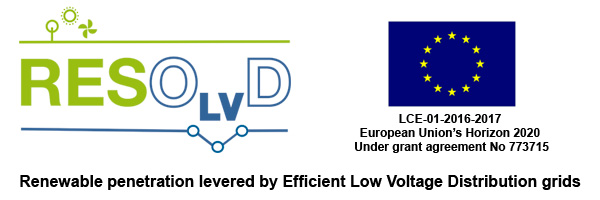Cost effectiveness of the RESOLVD solution
In the final phase the four core technologies of the RESOLVD project the LVD-DST, PED, ESB, and PMU based WAMS solution, were successfully piloted.
A detailed cost-benefit analysis (CBA) has been performed to asses economic attractiveness of the solution. This CBA has also provided insights to development of RESOLVD based business model. This work lead by Smart Innovation has been carried under WP6 – New business models, project exploitation and standardisation.
Using CBA, it has been validated that the benefits of the RESOLVD solution in improving hosting capacity of low voltage grid outweighs their costs. In the project pilot these technologies were implemented in two substations of EyPESA (DSO and pilot owner of the project). It has been determined that the solution needs to be scaled up to be cost effective. The CBA also provides the break-even point in terms of scale-up the implementation.
Two surveys were parallely conducted, one to understand the perception of the technology developers and the other to understand the needs of the customers (DSOs). The customer survey revealed the relevance and urgency of eight value propositions offered by RESOLVD (see Figure 1). The results from the survey show that all value propositions are relevant however the urgency of a solution varies based upon the local context of DSO. Further it is clear that not all customer require a complete comhrehensive solution, thus the solution needs to be customized. Considering this fact, RESOLVD has proposed four key exploitation packages to meet the needs of the cusotmers whith each package providing different sets of value propositions.
Based upon the customer’s willingnes to pay, a more cost-effective way to deliver the solution has been identified which has a high internal rate of return. This results in a business model that focuses on providing the RESOLVD solution in the form of software-as-a-service (SaaS). Such an approach is also within the regulatory boundaries for DSO operations. The CBA provides a practical evidence that an OPEX based grid management approach can reduce investment costs while improving th hosting capacity of the grid. Detailed results will be published in journal articles soon.


